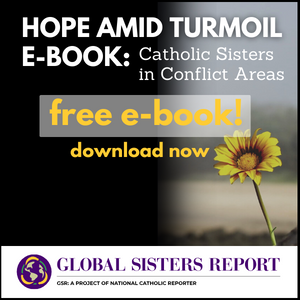By guest blogger Kevin Considine
I’m of the opinion that some comic book films, and in particular Christopher Nolan’s Batman franchise, offer insights into our society through a kind of grotesque, parallel world. Like myths, these films can highlight aspects of human nature and society through strong metaphors and analogies.
So it was with interest that I watched the trailer for the third installment, The Dark Knight Rises. In one memorable clip, Selina Kyle tells Bruce Wayne, “You think this can last? There’s a storm coming, Mr. Wayne. You and your friends better batten down the hatches. Because when it hits, you’re all going to wonder how you ever thought you could live so large and leave so little for the rest of us.”
The trailer shows a parallel with the “Occupy Wall Street” movement. In particular, the scene resonates with the protestors’ claim of representing the 99% of the U.S. that is fed up with the 1% who possess the majority of the wealth and access to political power.
The parallel with the real world breaks down when it comes to any connection to the church. But it does suggest a question: Where does the Catholic Church stand in society? In the 1%? The 99%? In between? This is an oversimplified question. But it brings up a good point.
The church, as a bureaucratic institution, is among the wealthiest in the U.S., if not the world. Now the church is much more than an institution. As theologian Avery Dulles has pointed out, the church as “institution” is only one among six models of the church. In addition, the church is a “mystical communion,” “sacrament,” “herald,” “servant,” and “community of disciples.” And it is important to point out that the church often uses its wealth to carry out great humanitarian, educational, and evangelistic projects.
At the same time, where does the Church as a wealthy institution reside within the economic landscape of the U.S. and the world? Do the people of God have a greater interest in residing among the 1% or the 99%?
The answer is far from clear. The mendicant religious orders continue to remind the church that it, too, can worship mammon instead of the God of Jesus Christ. But our history is ambiguous. We see the very best and the very worst of humankind at work in the name of our church. For example, there is the bloody colonization of the Americas—through the intertwining of sword, cross, and gold, as facilitated by Pope Alexander VI’s Bull Inter Caeterum—and there were tireless workers for true evangelism such as Bartolome de Las Casas, St. Peter Claver, and St. Martin de Porres. There were Catholics who were wealthy landholders and slave-owners and there were Catholics seeking justice for the displaced workers and liberation for the slaves.
Particularly in this presidential election year, it is important to ask the question: among whom will we as the church decide to reside? The 99 % or the 1%? Hopefully we can make our answer clear.
Kevin Considine is a Ph.D. candidate in theology at Loyola University in Chicago.
Guest blog posts express the views of the author. They do not necessarily reflect the views of U.S. Catholic, its editors, or the Claretians.









